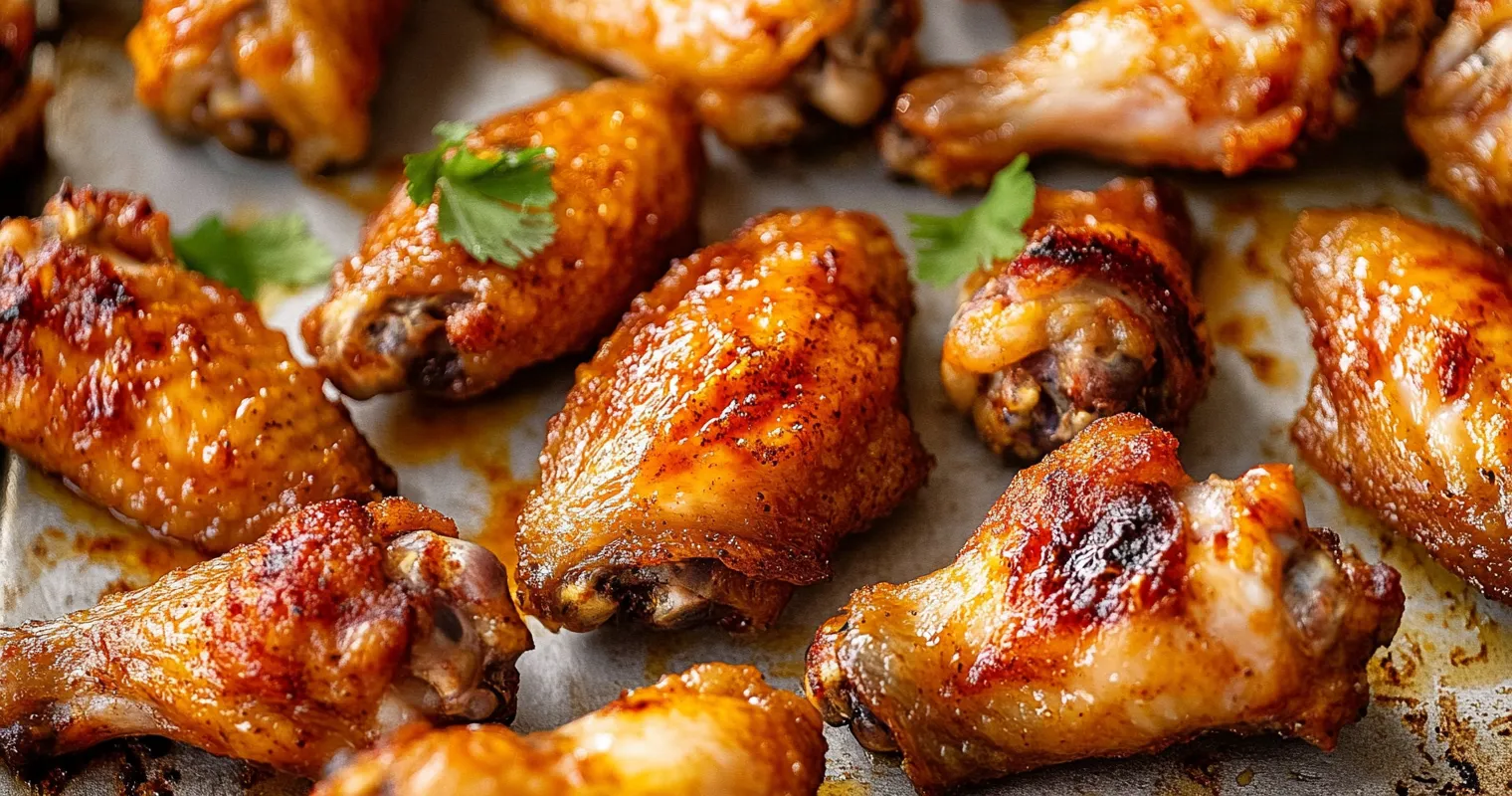Reheating chicken wings might seem like a straightforward task, but doing it the right way can mean the difference between juicy, flavorful wings and dry, rubbery disappointments. Whether you have leftover wings from a game night, restaurant outing, or homemade batch, preserving their crispy exterior and juicy interior requires the right techniques. In this guide, we’ll explore the best ways to reheat chicken wings while keeping them as delicious as when they were first made.
Why Proper Reheating Matters
Chicken wings have a unique combination of crispy skin and tender meat, which can be easily ruined during reheating. Improper techniques often lead to dried-out meat, soggy skin, or uneven heating. When you reheat them properly, you bring back the flavors and textures that make chicken wings irresistible. Whether your wings are saucy, dry-rubbed, or plain, the reheating method significantly impacts their taste and texture.
Best Methods to Reheat Chicken Wings
There are several effective ways to reheat chicken wings, each with its own benefits. Below, we’ll break down the top methods to ensure your wings stay juicy and delicious.
1. Reheating in the Oven
The oven is one of the best methods for reheating chicken wings, especially when you want to maintain a crispy texture.
Steps:
- Preheat your oven to 375°F (190°C). A properly preheated oven ensures even heating.
- Arrange the wings on a baking sheet lined with aluminum foil or parchment paper to prevent sticking.
- If your wings are sauced, brush on a bit more sauce to keep them moist and flavorful.
- Cover the wings loosely with aluminum foil to prevent them from drying out.
- Bake for 10–15 minutes, flipping them halfway through for even reheating.
- For extra crispiness, remove the foil during the last 5 minutes of reheating.
Pro Tip: Use a wire rack on the baking sheet to allow air to circulate around the wings, ensuring even crisping.
2. Reheating in an Air Fryer
An air fryer works wonders for reheating wings, providing crispy skin and tender meat without the need for additional oil.
Steps:
- Preheat the air fryer to 375°F (190°C).
- Place the wings in a single layer in the air fryer basket, avoiding overcrowding. Overcrowding prevents proper air circulation.
- Reheat for 5–7 minutes, shaking the basket halfway through to ensure even heating.
- Check the wings for doneness, and if needed, cook for an additional 1–2 minutes.
Pro Tip: For sauced wings, add extra sauce after reheating to avoid burning the sauce during the process.
3. Reheating on the Stove
Reheating wings on the stove allows you to control the heat and achieve a slightly crispy exterior.
Steps:
- Heat a non-stick or cast-iron skillet over medium heat.
- Add a teaspoon of oil to the pan to prevent sticking and enhance crispiness.
- Place the wings in the skillet, ensuring they don’t overlap.
- Cover the pan with a lid to trap steam and help heat the wings evenly.
- Flip the wings every 2–3 minutes for about 6–8 minutes, or until they’re heated through.
Pro Tip: Use medium heat to avoid burning the skin while ensuring the meat heats thoroughly.
4. Reheating in the Microwave (With Caution)
The microwave is the quickest method but also the riskiest for maintaining texture. Use this method only when you’re short on time.
Steps:
- Arrange the wings in a microwave-safe dish in a single layer.
- Cover the wings with a damp paper towel to retain moisture.
- Heat on medium power for 1–2 minutes.
- Check for warmth and continue heating in 30-second increments if needed.
Pro Tip: To restore some crispiness, finish the reheated wings in a hot skillet or air fryer for 1–2 minutes.
5. Reheating on the Grill
Reheating on the grill infuses a smoky flavor while maintaining the wings’ texture.
Steps:
- Preheat the grill to medium heat.
- Place the wings on the grill, ensuring they don’t overlap.
- Turn them frequently to avoid burning and to ensure even heating.
- Reheat for 5–8 minutes until the wings are hot and slightly charred.
Pro Tip: Use indirect heat for sauced wings to prevent the sauce from burning.
Mistakes to Avoid When Reheating Chicken Wings
- Skipping Preheating: Always preheat your oven, air fryer, or grill. Preheating ensures even cooking and prevents the wings from drying out.
- Overcrowding: Whether you’re using an air fryer, skillet, or oven, overcrowding leads to uneven reheating. Always leave space between the wings.
- Using High Heat: High heat can burn the skin while leaving the interior cold. Stick to moderate temperatures for gradual, even heating.
- Reheating Frozen Wings Without Thawing: If your wings are frozen, thaw them in the refrigerator overnight before reheating. This ensures even heating and prevents dry, overcooked edges.
Tips to Keep Chicken Wings Juicy
- Brush with Sauce or Oil: Before reheating, brush the wings with their original sauce or a light coat of oil. This step locks in moisture and enhances flavor.
- Cover with Foil: While baking or grilling, cover the wings loosely with foil to prevent them from drying out during the initial stages of reheating.
- Monitor the Process: Check the wings frequently to ensure they don’t overcook. Overcooking strips them of their moisture and tenderness.
- Rest After Reheating: Let the wings rest for 1–2 minutes after reheating. This step allows the juices to redistribute, keeping the meat juicy.
Reheating Sauced vs. Dry Wings
- Sauced Wings: Sauced wings can burn easily during reheating, especially in high-heat methods like air frying or grilling. To prevent burning, add a fresh layer of sauce after reheating.
- Dry Wings: Dry-rubbed wings hold up better during reheating. To enhance their flavor, you can brush them with a light glaze of oil or melted butter before reheating.
Creative Ways to Enjoy Reheated Wings
Reheated chicken wings can become the star of a new dish. Here are some creative ways to enjoy them:
- Buffalo Wing Salad: Slice the wings and toss them onto a bed of greens, adding blue cheese dressing and celery for a refreshing twist.
- Wing Tacos: Shred the meat from reheated wings and stuff it into tortillas with coleslaw and spicy mayo.
- Wing Nachos: Chop the wings and layer them over tortilla chips with cheese, jalapeños, and salsa.
- Wing Pizza: Use reheated wings as a topping for homemade pizza, pairing them with buffalo sauce and mozzarella.
- Wing Pasta: Combine shredded wing meat with alfredo or marinara sauce for a hearty pasta dish.
Storing Chicken Wings for Easy Reheating
Proper storage plays a crucial role in how well your wings reheat. Always store leftovers in an airtight container to prevent them from drying out. Refrigerate wings within two hours of cooking to maintain their quality and freshness. For longer storage, freeze the wings in a freezer-safe container or bag. When reheating frozen wings, thaw them in the refrigerator first for best results.
Balancing Moisture and Crispiness
Maintaining the balance between moisture and crispiness when reheating chicken wings requires careful attention. While you want the skin to stay crispy, the meat inside should remain tender and juicy. Methods like using an air fryer or the oven excel because they recreate the texture of freshly cooked wings. Brushing the wings with a thin layer of oil or sauce before reheating not only enhances flavor but also helps retain moisture while ensuring the skin gets that desired crunch. This approach guarantees the wings are enjoyable from the first bite to the last.
Timing Matters When Reheating
Proper timing ensures your chicken wings reheat evenly. Overcooking wings during reheating often leads to dry, tough meat, while undercooking leaves cold spots in the center. Using a timer helps prevent either extreme. Always start with the recommended time for your chosen reheating method and check frequently toward the end of the process. For thick or larger wings, adding a couple of extra minutes can make a big difference, ensuring the meat heats through without compromising texture.
Reheating Frozen Wings the Right Way
If you’re reheating frozen wings, proper thawing is essential for the best results. Avoid reheating frozen wings directly, as this leads to uneven heating, with the exterior overcooked while the interior remains cold. Thaw the wings in the refrigerator overnight or use a microwave’s defrost function if you’re short on time. Once thawed, follow the preferred reheating method, ensuring the wings are heated evenly while retaining their juiciness and crispness.
Layering Sauces After Reheating
Adding sauce after reheating enhances the flavor and preserves the integrity of the wings. Some sauces, particularly those with high sugar content like honey barbecue, can burn during reheating. To avoid this, lightly reheat the wings without sauce and brush them with fresh sauce once they’re warmed. Tossing the wings in sauce after reheating ensures they remain flavorful, glossy, and delicious without sacrificing the texture of the skin.
Reheating Large Batches of Wings
When reheating a large batch of chicken wings, space them out to ensure even heating. Overcrowding the baking sheet, air fryer basket, or skillet prevents proper air circulation, leading to unevenly reheated wings. For large quantities, consider reheating in multiple smaller batches or using multiple racks in the oven. This approach allows each wing to get enough exposure to heat, maintaining a consistent quality throughout the batch.
Enjoying Reheated Wings for Any Occasion
Reheated chicken wings aren’t just for leftovers—they can transform into a convenient option for casual gatherings, game nights, or impromptu meals. Pair them with fresh sides like celery sticks, blue cheese dressing, or even a quick coleslaw to elevate your spread. By using reheating methods that enhance flavor and texture, your wings can shine just as much as they did the first time around. Whether you’re feeding a crowd or enjoying them solo, reheated wings deliver satisfaction with the right techniques.
Conclusion
Reheating chicken wings doesn’t have to mean sacrificing their flavor or texture. By choosing the right method—whether it’s the oven, air fryer, stovetop, or grill—you can enjoy juicy, delicious wings that taste just as good as they did fresh. Avoid common mistakes, pay attention to details like sauce and storage, and experiment with creative ways to serve your reheated wings. With these tips and techniques, you’ll never settle for dry or rubbery chicken wings again!

